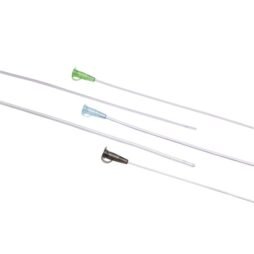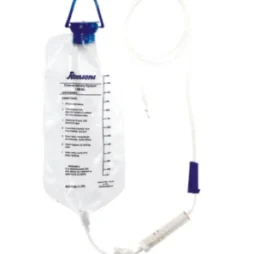A cannula fixator, often referred to as an IV cannula securement device or catheter securement device, is a medical tool designed to stabilize and secure intravenous (IV) catheters or cannulas in place once they have been inserted into a patient’s vein. This device plays a crucial role in preventing accidental dislodgment of the IV line, ensuring continuous and safe delivery of fluids, medications, or blood products. Here’s a description of a cannula fixator:
Description of a Cannula Fixator:
A cannula fixator is a medical device designed for the secure attachment and stabilization of intravenous catheters or cannulas on a patient’s skin. It is typically constructed from materials that are both skin-friendly and hypoallergenic to prevent irritation or allergic reactions. The primary components of a cannula fixator include:
- Adhesive Base: The fixator features a flat, adhesive base that adheres to the patient’s skin surrounding the IV site. The adhesive is designed to maintain its integrity even in humid or moist conditions, ensuring reliable attachment.
- Strap or Sleeve: Extending from the adhesive base, the cannula fixator usually features a strap, sleeve, or retainer designed to secure the IV catheter or cannula in place. This strap is adjustable to accommodate different catheter sizes and can be secured tightly but comfortably.
- Adhesive Tabs: Many cannula fixators include adhesive tabs or wings that fold over the IV catheter or cannula, providing an extra layer of security and preventing accidental movement.
How a Cannula Fixator Works:
- Cannula Insertion: After a healthcare provider inserts the IV catheter or cannula into the patient’s vein, they place the cannula fixator over the catheter insertion site.
- Adhesive Attachment: The adhesive base of the fixator is carefully applied to the surrounding skin. It adheres firmly but gently, ensuring that the catheter remains in place without causing skin irritation.
- Catheter Securement: The adjustable strap or sleeve is used to secure the catheter in place, preventing any unintended movement or dislodgment. The adhesive tabs are folded over the catheter to provide an added layer of security.
- Comfort and Mobility: The cannula fixator is designed to secure the catheter without causing discomfort or restricting the patient’s mobility. It allows patients to move, bend their limbs, or perform everyday activities without compromising the integrity of the IV line.
Benefits of a Cannula Fixator:
- Patient Comfort: It enhances patient comfort by preventing catheter movement, reducing the risk of irritation or accidental dislodgment.
- Reduced Infection Risk: By minimizing the need for frequent catheter reinsertions, cannula fixators help reduce the risk of infection associated with catheter site disruptions.
- Cost-Efficiency: Preventing IV catheter dislodgment can lead to cost savings by reducing the need for additional catheter insertions and associated healthcare resources.
- Convenience: Healthcare providers can quickly and easily secure IV catheters using fixators, allowing them to focus on other aspects of patient care.






